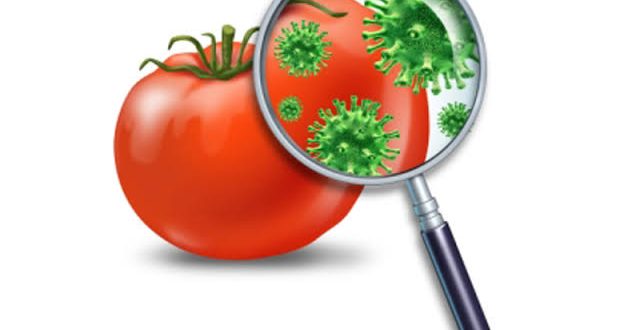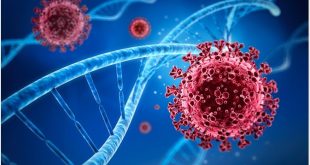Food is any substance consumed to provide nutritional support for the body. Food contains essential nutrients such as carbohydrates, fats, proteins, vitamins or minerals. Food is ingested by an organism and assimilated by the organisms cells to provide energy, maintain life or stimulate growth.
Classifications of food
According to Martin Frobisher, foods are of 4 types;
- Fresh foods,
- Preserved foods; Dried, Canned, Pickled, Frozen etc.
- Bread,
- Eggs.
There is another classification based on stability;
- Perishable food,
- Semi-perishable food,
- Stable food
According to Alcamo, food is of 3 types;
- Highly Perishable,
- Non-Perishable,
- Semi-Perishable.
Best safe and secure cloud storage with password protection
Get Envato Elements, Prime Video, Hotstar and Netflix For Free
Best Money Earning Website 100$ Day
#1 Top ranking article submission website
Perishable/ Highly Perishable
Foods that are likely to spoil or decay or become unsafe to consume if not kept refrigerated at 4.4°C or below or frozen at -20°C or below are called perishable food. They have limited shelf life and shelf life can be increased by refrigerating, freezing etc.
E.g.: milk, meat, fish, dairy products, etc.
Semi Perishable
Semi-perishable foods are foods that do not require immediate refrigeration for any length of storage but they also have limited shelf life, not extending beyond a year as they eventually get spoiled. E.g.: Onion, Potato, Garlic etc.
Non-Perishable
Non-perishable food items are those with a much longer shelf life and do not require refrigeration. They have lesser water content and do not get spoiled easily. E g.: Cereals, canned products, dried foods etc.
Food spoilage
Food spoilage means the original nutritive value, texture, colour, flavor of the food are damaged due to the additives or actions of microorganisms, insects and enzymes which become harmful and unsuitable to eat. It can also be defined as the undesirable changes occurring in food due to the influence of air, light, moisture which foster the growth of microorganisms.
Types of food spoilages
- Putrefaction
- Fermentation
- Rancidity
1. Putrefaction: This is the decomposition of organic matter particularly the anaerobic breakdown of protein by bacteria with the production of foul smelling compound. Microbes having proteolytic enzymes i.e. protease, caseinase, gelatinase are responsible for this type of spoilage.
Protein + Proteolytic microbes = Amino acids + Amines + Ammonia + Hydrogen sulfide
2. Fermentation: This refers to the the breakdown of carbohydrates into acid (lactic), alcohol, carbon dioxide by the action of specific enzymes called ferments, produced by minute organism such as mould, bacteria, yeasts etc.
Carbohydrate + Carbohydrate fermenting microbes = Acids + Alcohols + Gases
3. Rancidity: This is the chemical decomposition of fats and oil which result in the production of unpleasant odour and flavours. There are 3 types of rancidity:
- Hydrolytic rancidity occurs when triglycerides go through the process of hydrolysis, breaking them down into their fatty acid and glycerol.
- Oxidative rancidity is caused by oxidation in unsaturated oil or fats. When these types oil or fats are exposed to oxidation, they begin decomposing into short chain fatty acid such as butyric acismd which give the fat a rancid taste.
- Microbial rancidity is caused by bacteria breaking down fat with enzymes causing the fat to decompose.
Factors affecting microbial growth in food
- Composition,
- pH,
- Water,
- Antimicrobial substances,
- Temperature,
- Atmosphere,
- Relative humidity.
1. Composition
Microorganisms require proteins, carbohydrates, lipids, water, energy, vitamins and minerals for growth. Various foods have specific nutrients that help in microbial growth. These foods are hence susceptible to to microbial spoilage.
2. pH
Most bacteria grow best at neutral or weakly alkaline pH usually between 6.8- 7.5. Food having neutral pH are more likely for microbial growth. Most bacteria are killed in strong acid or strong alkaline environment.
3. Water
The amount of free water is important for growth of microorganisms. If there is lavk of free water, then microorganisms growth will be inhibited.
4. Antimicrobial substances
Antimicrobial substances in food inhibit microbial growth. Various foods have inherent antimicrobial substances that prevent microbial attack.
e.g. Lactenin and anti-coliform factors in milks and lysozyme in eggs.
5. Temperature
The growth of microorganisms is affected by environmental temperatures. Most of the bacteria grow well in 25-40°C temperature. Various microorganisms are able to grow well at certain temperatures and not others. Lower temperature retards microbial growth.
6. Atmosphere
The presence and concentration of oxygen have a great effect on microbial growth. Generally, oxygen promotes growth of aerobic and facultatively anaerobic organisms.
7. Relative humidity
Higher relative humidity of atmosphere promotes microbial growth.
Principles of food preservation
There are 3 principles:
- Prevention or removal of contamination,
- Inhibition of microbial growth,
- Killing of microorganisms.
Quality of the food must be preserved.
Types of preservation
Foods are preserved since primitive time by using various methods. Food preservation is a continuous fight against microorganisms spoiling the food or making it unsafe.
1. Aseptic handling: Food items undergo considerable handling prior to being processed by some specific method of preservation such as canning, freezing or dehydration. Each step in the preparation of a food for its final treatment is a potential source of contamination. So, food items should be handled carefully and aseptically.
2. High temperature: High temperature is one of the safest and most reliable methods of food preservation. Heat acts as a microbiocidal agent killing all vegetative cells and spores from a food element. Killing microorganisms by heat involves a time temperature relationship as thermal death point (TDP) and thermal death time (TDT). Steam under pressure is the most effective method of high temperature food preservation. The process of pasteurization is also based on the principle of high temperature preservation.
3. Low temperature: Temperature approaching 0°C and lower retard the growth and metabolic activities of microorganisms. Generally, foods are stored in the normal refrigerator at 4°C and in deep freezers at -20°C temperature. Regular refrigeration reduces the growth of the most mesophile bacteria by 10 times.
4. Dehydration: One of the reasons of food spoilage is the presence of moisture. The removal of the water by drying in the sun and air or with applied heat causes dehydration of foods. This inhibits the metabolic activity and growth of microorganisms and creates a microbistatic condition. Spray drying is the process used for liquids.
5. Osmotic pressure: Water is withdrawn from microorganisms, placed in solutions containing large amount of dissolved substances such as sugar or salt. The cells are plasmolysed and metabolism is arrested. High osmotic pressure may inhibit microbial growth, but do not kill all organisms.
6. Chemicals: Food preservation is done by using different chemicals but only a few are legally acceptable. Among the most effective food preservatives are Benzoic, Sorbic, Acetic, Lactic and Propanoic acid all of which are organic acids. Sorbic and Propanoic acid are used to inhibit mold growth in bread. Nitrates and nitrites are used in curing meats. Foods prepared by fermentation process are preserved mainly by Acetic, Lactic and Propanoic acids, produced during fermentation.
7. Radiation: UV light of sufficient intensity and time of exposure is microbiocidal to exposed microorganisms. UV irradiation is used to control microorganisms on surface or thin, clear layers of liquid. Ionizing radiations are lethal to microorganisms. Gamma rays and electron beams have been used in food industry.
8. Canning: Canning is the general term applied to the process of packaging a food in a container and subjecting it to a thermal process for the purpose of extending its useful life. In 1810, Nicholas Appert described canning process. An optimal thermal process will destroy pathogenic bacteria, kill or control spoilage organisms present and have me minimal impact on the nutritional and physical qualities of the food.
In the canning process, new food or vegetable is cleaned well and in case of vegetable, blanching is done to avoid undesirable changes. Then, the cans are filled and passed through high temperature. This heating expands the food and drives out most of the air in the can. Then the cans are immediately sealed. The temperature used for canning foods ranges from 100°C fo high acidic food to 121°C for low acidic foods. The most important organisms to be eliminated in canned foods is Clostridium botulinum.
The temperature-time relationship for canning depends on the type of food, its pH, the size of the container, the consistency, or the density of the food.
9. Blanching: Blanching is a cooking process wherein a food, usually a vegetable or fruit, is scalded in boiling water or oil, removed after a brief time interval and finally plunged into icy water or placed under cold running water (shocking or refreshing) to halt the cooking process. Blanching foods helps reduce quality loss over time.
People often use blanching as a pre-treatment prior to the freezing, drying or canning- heating vegetables or fruits to inactivate enzymes, modify texture, remove the peel and wilt tissue. Blanching is also utilized to preserve color, flavor and nutrional value. The process has three stages: preheating, blanching and cooling.
The most common blanching methods for vegetables/fruits are hot water and steam, while cooling is either done cold water or cool air. Other benefits of blanching include removing pesticide residues and decreasing microbial load.
Drawbacks to blanching process can include leaching of water-soluble and heat sensitive nutrients and production of effluents. Blanching is a process used in the home kitchen as well as used as a pre-treatment in the food industry. In both cases, its main purpose is to inactivate enzymes that cause browning as well as texture changes and off-flavors.
Enzymes that cause deterioration in fruits and vegetables include lipoxygenase, polyphenoloxidase, polygalacturonase and chlorophyllase.
Differentiation between Food borne infection and food borne intoxication are as follows;
| Infection | Intoxication |
| 1. A foodborne infection is caused by the ingestion of infectious pathogens in the food. | 1. Foodborne intoxication is caused by consuming foods that contain toxins. |
| 2. Have a longer incubation time | 2. Have shorter Incubation time. |
| 3. Infections are caused by microorganisms. | 3. Toxins may be produced by microorganisms or can be naturally present in the food. |
| 4. Causal microorganisms remain alive during ingestion and multiply in the intestine. | 4. Microorganisms producing toxins do not always grow in the host and often are not alive during ingestion. |
| 5. e.g. Salmonellosis caused by Salmonella, Shigellosis caused by Shigella. | 5. Botulism is caused by Clostridium botulinum. |
 Plantlet The Blogging Platform of Department of Botany, University of Dhaka
Plantlet The Blogging Platform of Department of Botany, University of Dhaka





